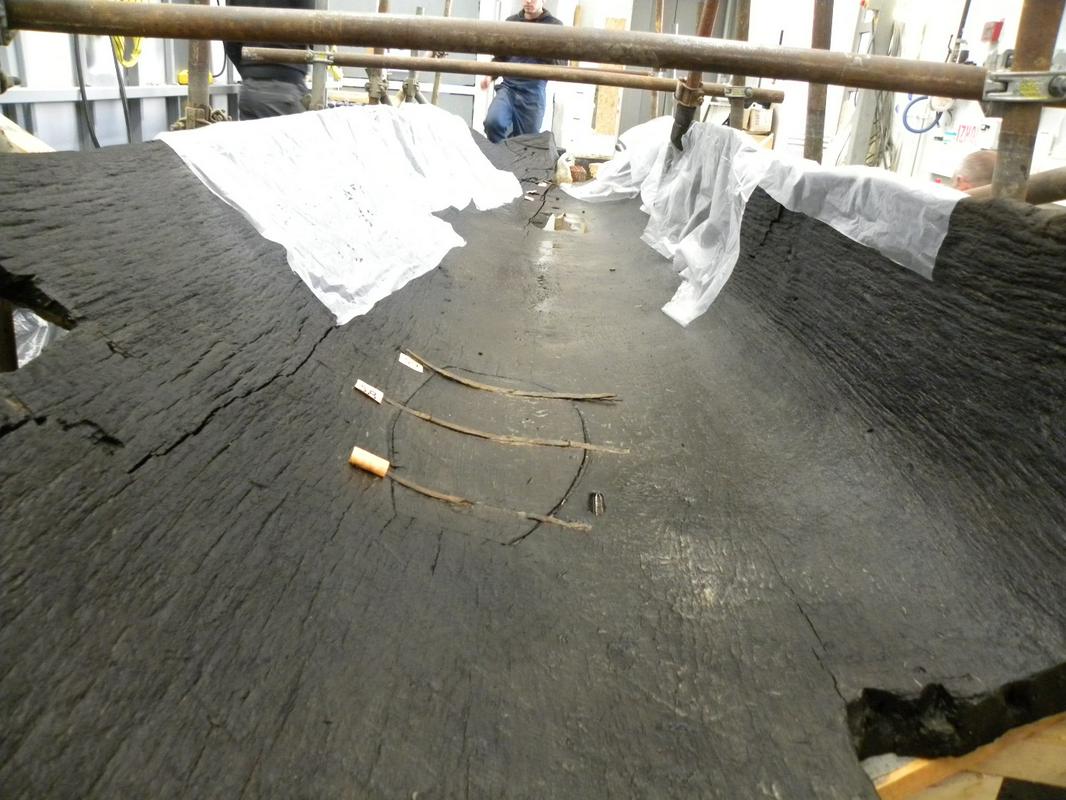

Due to its wide availability and other advantages, people have always used wood for all kinds of things. Wood was used as a source of energy and as a building material. It was also used to create tools. Since wood tends to decompose over time, such archaeological finds are rare. They only survive in extreme conditions – when a shortage of oxygen prevents microorganisms from growing.
More water than wood
The dugout boat is mainly made up of water. According to Dr Katja Kavkler, a conservator at the Restoration Centre of the Institute for the Protection of Cultural Heritage of Slovenia, the amount of water in the wood outweighs the wood by 400 percent. If the dugout were to be dried, it would crack and become deformed. To prevent this from happening, the remains will be treated with melamine resin. The resin fills the cracks, allowing the dugout to retain its shape and colour.
The surface of the dugout was cleaned manually with brushes, toothbrushes and scalpels. Samples have been taken to determine its age. Next, it will be soaked in demineralized water in order to remove acids and salts from the wood. A too low pH value could accelerate the solidification of the resin, which would increase the risk of damage.
When the measurements confirm that the wood is pure enough, the dugout will be soaked in the aqueous melamine resin solution. Finally, it will be polymerized at high temperature.
Before that happens, the remains will be scanned in 3D and documented. This will produce new data and make it easier for the archaeologists to restore the dugout. It will also allow them to monitor the quality of the conservation process.
Secured with special moulds
Since the wood is heavily decomposed, the Restoration Centre created special epoxy moulds to prevent the deformation of the large dugout boat during the restoration process. Holes have been drilled into the moulds to facilitate the exchange of substances in the later stages of the procedure.
This is the first such procedure in Slovenia. The famous wooden wheel found in the Ljubljana Marshes was also treated with melamine resin, but the restoration process was carried out in Mainz (Germany). Moreover, the wheel is much smaller by comparison. So far, 250 cubic metres of water, 700 kilograms of epoxy resin, around 350 square metres of glass fibre, 350 kilograms of aluminium and around 700 latex gloves have been used for the restoration of the dugout boat.
Maja Kač; translated by D. V.

































































